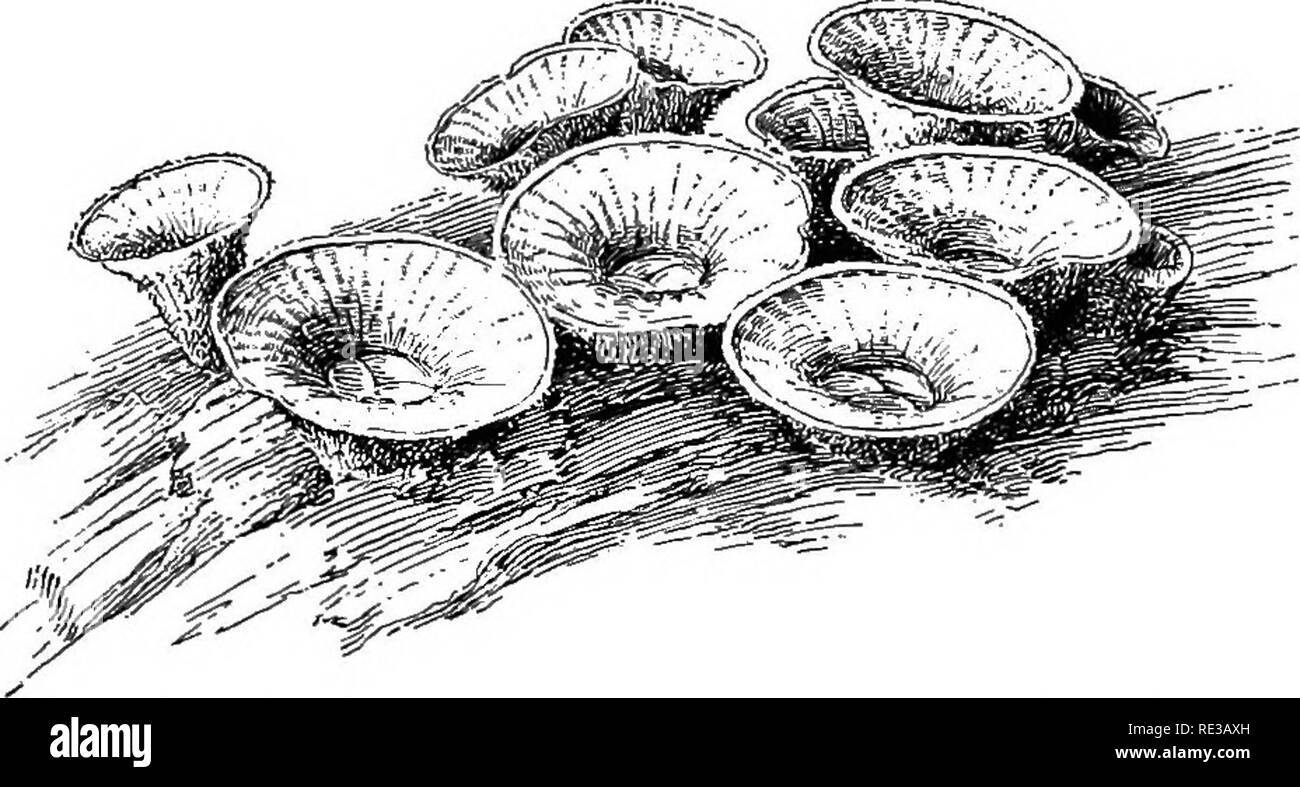. Practical botany. Botany. THE BASIDIUM FUNGI (BASIDIOMYCETES) 255 life processes they are of the greatest importance, since they are instruments of decay and soil enrichment, and bear an im- portant relation to various industries. As producers of diseases of plants, animals, and men, they have great significance. Phycomycetes are sometimes saprophytic and sometimes parasitic. As saprophytes they are instruments of decay, and as parasites they often kill their hosts and then as saprophytes disorganize them. The simpler phycomycetes, as bread mold,. Fig. 213. Nest fungi growing in soil in whic

Image details
Contributor:
The Book Worm / Alamy Stock PhotoImage ID:
RE3AXHFile size:
7.1 MB (411.8 KB Compressed download)Releases:
Model - no | Property - noDo I need a release?Dimensions:
2158 x 1158 px | 36.5 x 19.6 cm | 14.4 x 7.7 inches | 150dpiMore information:
This image is a public domain image, which means either that copyright has expired in the image or the copyright holder has waived their copyright. Alamy charges you a fee for access to the high resolution copy of the image.
This image could have imperfections as it’s either historical or reportage.
. Practical botany. Botany. THE BASIDIUM FUNGI (BASIDIOMYCETES) 255 life processes they are of the greatest importance, since they are instruments of decay and soil enrichment, and bear an im- portant relation to various industries. As producers of diseases of plants, animals, and men, they have great significance. Phycomycetes are sometimes saprophytic and sometimes parasitic. As saprophytes they are instruments of decay, and as parasites they often kill their hosts and then as saprophytes disorganize them. The simpler phycomycetes, as bread mold, . Fig. 213. Nest fungi growing in soil in which is decaying wood "Within the cup-like plants are the egg-like hodies which contain the spores. Natural size reproduce themselves by asexual spores and by forming zygo- spores, as do some of the green algse. One of the more com- plex forms, water mold, lives in the vs^ater and reproduces by means of zoospores; it also forms oospores by means of special sex organs. Sometimes its oospores are produced without fer- tilization. Such forms as the downy mildew of the grape are parasites. They bear conidia, or sporangia-like bodies, upon the leaves of theii" hosts, and produce oospores within these leaves. Ascomycetes have conidia, but are distinguished by the fact that some of their spores are formed in sacs at the tips of hyphse. These sacs are in open cups, as in MorcheUa, Peziza, and Sclerotinia; or inclosed, or almost so, as in the lilac mil- dew. Some forms (^PenicUUum and yeasts) seem to have lost part of the usual ascomycete life cycle. The life habits of. Please note that these images are extracted from scanned page images that may have been digitally enhanced for readability - coloration and appearance of these illustrations may not perfectly resemble the original work.. Bergen, Joseph Y. (Joseph Young), 1851-1917; Caldwell, Otis William, 1869- joint author. Boston, New York [etc. ] Ginn and company